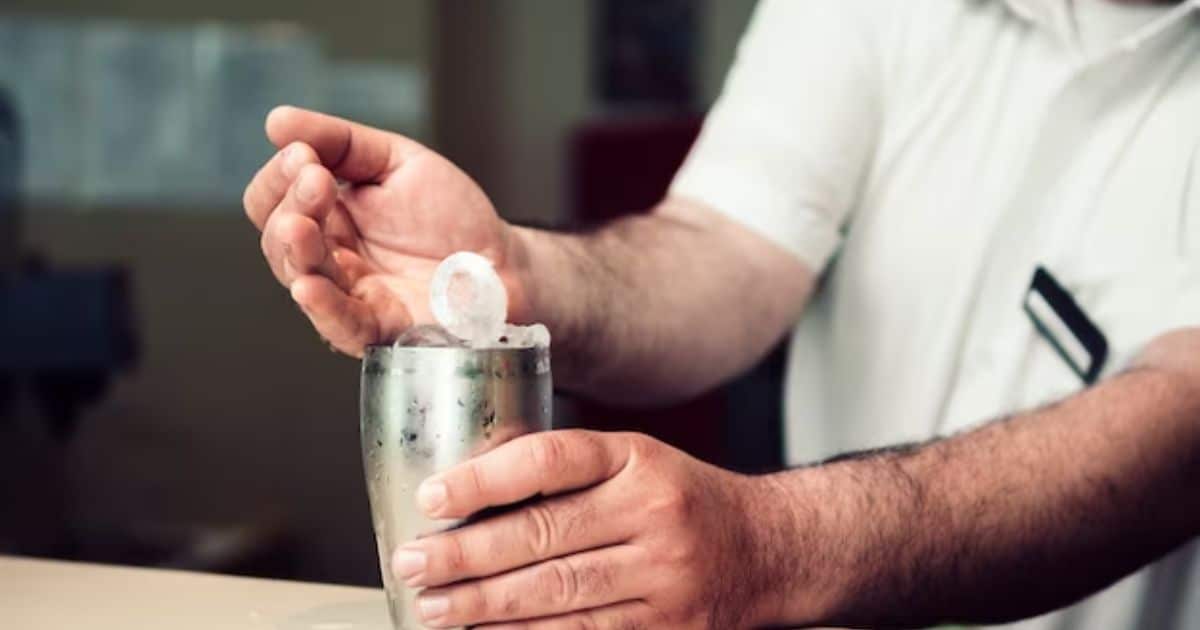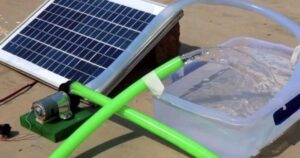Hard water, filled with minerals like calcium and magnesium, can harm pipes, and appliances, and even leave stubborn stains on machines like dishwashers and laundry units. To tackle this issue, water softeners were invented, and they bring a lot of benefits. One key component in the water-softening process is salt.
Many people wonder, “How often do I add salt to my water softener?” This question arises because water softeners play a crucial role in reducing the hardness of water. Knowing when to add salt is essential, and typically, it’s recommended to do so every 4 to 8 weeks or when the salt level in the brine tank is low.
Water softeners work through a process called ion exchange, where a special resin removes minerals from the water and replaces them with sodium ions. To keep this process efficient, the resin needs cleaning and recharging. This is where salt comes in. A brine solution, made with salt, cleans the resin in the brine tank through a weekly regeneration cycle.
This cycle ensures the water softener continues working effectively. Regularly checking the salt level, at least once a month, is crucial for maintaining the water softener’s proper functioning. Most experts recommend keeping the salt level three to four inches above the water level in the brine tank to ensure optimal performance.
Hard Water Issues
Hard water is water that contains a high concentration of minerals, primarily calcium and magnesium ions. While these minerals are not harmful to human health, they can lead to various issues when present in high quantities in household water. Some common hard water issues include:
- Hard water causes the accumulation of mineral deposits, known as scale, in pipes, faucets, and appliances.
- The minerals in hard water can contribute to the deterioration of household appliances such as water heaters, dishwashers, and washing machines.
- Hard water can leave unsightly stains on glassware, dishes, and plumbing fixtures.
- The minerals in the water react with soap, forming soap scum, and can leave spots on dishes even after washing.
- Washing clothes with hard water can result in dull, stiff fabrics and reduce the effectiveness of laundry detergents. Hard water minerals can also contribute to the discoloration of white clothing over time.
- Bathing or showering with hard water may leave a residue on the skin and hair, making them feel dry and less smooth. The minerals can interfere with the lathering of soap and shampoo, reducing their effectiveness.
Ensure You Get the Right Kind of Water Softener Salt

Choosing the right kind of water softener salt is essential to ensure the efficient operation of your water softening system. Here are some key considerations to help you select the appropriate water softener salt:
Salt Type
Water softeners typically use either solar salt, evaporated salt, or rock salt. Evaporated salt is the purest form, while solar salt and rock salt may contain impurities. Consider the purity level required for your specific water softener system.
Pellet or Crystal Form
Water softener salt is available in pellet or crystal form. Pellets are usually cleaner and dissolve more evenly, making them a preferred choice for many water softeners. Crystals may be less expensive but can leave more residue.
Salt Purity
Check the purity level of the salt. High-purity salts, such as 99.8% pure, are recommended to prevent impurities from building up in the brine tank and affecting the water-softening process.
Iron-Removing Salt
If your water supply has high iron content, consider using a specialized salt with additives designed to remove iron. This can help prevent iron buildup in the water softener system.
Salt Size
The size of the salt pellets or crystals should be compatible with your water softener’s specifications. Check your system’s manual to determine the recommended salt size.
Budget Considerations
Evaluate your budget and the cost of different types of water softener salts. While higher-purity salts may be more expensive, they can contribute to the long-term efficiency of your water softener.
Environmental Impact
Consider environmentally friendly options. Some salts are labeled as environmentally safe or produced using eco-friendly processes. Look for certifications or information on the packaging regarding the environmental impact of the salt.
Water Softener Salt Delivery Can Keep Soft Water Flowing

Water softener salt delivery services offer a convenient and efficient solution to ensure a continuous supply of soft water in households. These services eliminate the hassle of manually purchasing and transporting salt for your water softener, providing a seamless and worry-free experience for homeowners.
By opting for water softener salt delivery, individuals can enjoy the benefits of softened water without the need to monitor salt levels constantly. This not only saves time but also ensures that the water softener operates at its optimal efficiency, preventing the negative effects of hard water on pipes, appliances, and fixtures.
With water softener salt delivery, homeowners can schedule regular shipments based on their usage patterns, ensuring a consistent supply of salt for the water softening system. This proactive approach helps prevent interruptions in the softening process, ensuring that the resin in the water softener remains effective in removing minerals and providing quality, softened water throughout the home.
The convenience of scheduled deliveries eliminates the need for last-minute trips to purchase salt, making it a practical and time-saving solution for those seeking a hassle-free way to maintain their water softener systems.
Is Something Wrong With Our Water Softener?
If you suspect something might be wrong with your water softener, there are a few simple things to check. First, ensure that the salt level in the brine tank is sufficient. If it’s low, add more salt following your system’s guidelines.
Additionally, check for any salt bridges or crusts that may have formed, as these can hinder the water softener’s performance. If the issue persists, it’s a good idea to consult your water softener’s manual for troubleshooting tips or seek assistance from a professional technician to diagnose and address any potential problems.
Regular maintenance, like checking salt levels and cleaning, can often keep your water softener working efficiently.
How Often Do You Need to Add Salt to the Water Softener?

The frequency of adding salt to a water softener depends on factors such as water hardness, system capacity, and household water usage. In general, it’s recommended to add salt every 4 to 8 weeks or when the salt level in the brine tank is low. Checking the salt level at least once a month is advisable to ensure the water softener operates effectively.
If you notice a decrease in softened water quality or experience issues with appliances, it may be a sign to check and replenish the salt in your water softener. Regular maintenance and timely salt additions contribute to the optimal performance of the water-softening system.
How Do You Know If a Water Softener Is Running Out of Salt?
If your water softener is running out of salt, you may notice a decline in the quality of your water. Hard water symptoms, such as mineral deposits on fixtures, soap scum on surfaces, or stiff laundry, might reappear.
Another clear indicator is a decrease in the efficiency of your water softener, resulting in appliances like dishwashers, washing machines, and even affecting the quality of tap and shower water. To confirm if salt levels are low, visually inspect the brine tank. If the salt level is below the water line or appears visibly low, it’s time to add more salt to ensure the continuous operation of your water softener.
Regularly checking the salt level in the brine tank, ideally, once a month, can help you stay ahead of potential issues. Keeping the salt at the recommended level ensures that the water softener continues to function optimally, preventing the negative effects of hard water on your plumbing, appliances, and overall water quality.
How to Add Salt to the Softener?
Adding salt to your water softener is a straightforward process. Here’s a simple guide:
- Before adding salt, check the current level in the brine tank. Ideally, it’s best to add salt when the level is about 25% full to ensure a continuous supply.
- Choose the appropriate type of salt recommended for your water softener, such as evaporated salt pellets or crystals. Refer to your softener’s manual for specific salt recommendations.
- Locate the brine tank, which is usually close to the water softener unit. Open the lid or access panel to reveal the tank.
- Inspect the tank for any salt bridges or crusts, as these can hinder the salt’s proper dissolution. Break up any formations using a broom handle or other tool.
- Pour the salt into the brine tank carefully. Be mindful not to overfill, as this may lead to salt spillage.
- If you’re changing the type of salt used, avoid mixing different salt types in the tank. Use up the existing salt before switching to a new type.
- Close the lid or access panel securely after adding the salt.
- Keep an eye on the salt level in the tank and replenish it as needed, typically every 4 to 8 weeks or when the salt level is low.
FAQ’s
How often do you add salt to water filtration system?
The frequency of adding salt to a water filtration system depends on the type of system. For water softeners, it’s typically recommended every 4 to 8 weeks or when the salt level is low in the brine tank. Check your system’s manual for specific guidelines.
What happens if you don’t add salt to water softener?
This can result in hard water issues, leading to scale buildup, appliance damage, and reduced overall efficiency of the water softening system.
How long does it take for water softener to work after adding salt?
After adding salt to a water softener, it typically takes a few hours to start working. However, for the full regeneration cycle and optimal softening, it may take up to a day.
Will water softener regenerate without salt?
Salt is a crucial component in the regeneration process, where the resin in the softener is cleaned and recharged to continue effectively softening water.
What are the disadvantages of a water softener?
Water softeners can increase sodium levels in softened water, which may be a concern for those on sodium-restricted diets. The discharge of brine during the regeneration process can have environmental impacts on water bodies if not properly managed.
Conclusion
Hard water with lots of minerals can create problems in homes, like clogging pipes and leaving stains on things. To fix this, it’s important to regularly check and maintain the water softener system. Choosing the right kind of salt for the water softener is crucial, and some companies can deliver it to your home, making things easier.
If you think something is wrong with your water softener, first check if there’s enough salt in it. You can also look for any crusty stuff inside. If the problem continues, it’s a good idea to follow the manual or ask a professional for help. Regularly adding salt, usually every 4 to 8 weeks, keeps the water softener working well.
Adding salt to the water softener is easy. Just check the salt level, use the right kind of salt, and pour it in. Be careful not to overfill. Keep an eye on the salt level and add more when needed. This helps the water softener do its job and prevents hard water from causing issues in your home.











